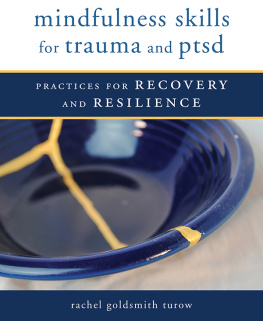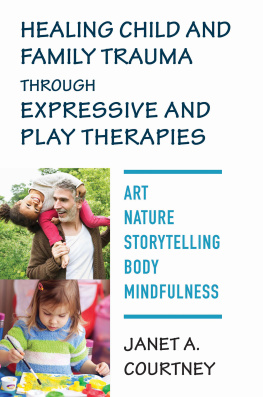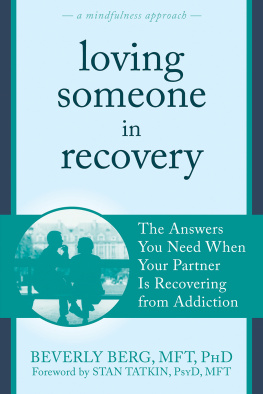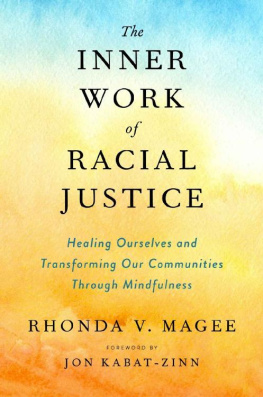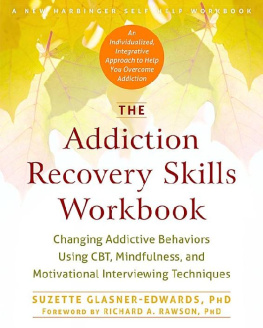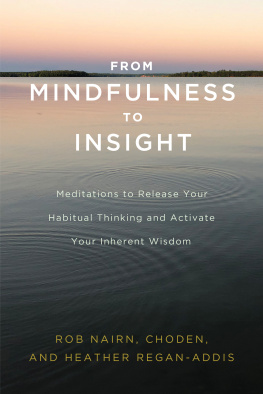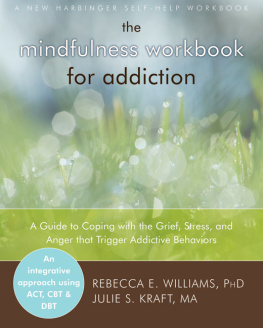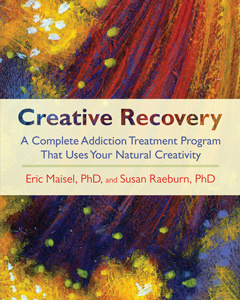Contents
Guide
Hazelden Publishing
Center City, Minnesota 55012
hazelden.org/bookstore
2019 by Beverly Conyers
All rights reserved. Published 2019.
No part of this publication, either print or electronic, may be reproduced in any form or by any means without the express written permission of the publisher. Failure to comply with these terms may expose you to legal action and damages for copyright infringement.
Library of Congress Cataloging-in-Publication Data
Names: Conyers, Beverly, author.
Title: Find your light : practicing mindfulness to recover from anything / Beverly Conyers.
Description: First Edition. | Center City, Minnesota : Hazelden Publishing, [2019] | Includes bibliographical references.
Identifiers: LCCN 2019026140 (print) | LCCN 2019026141 (ebook) | ISBN 9781616498030 (trade paperback) | ISBN 9781616498047 (ebook)
Subjects: LCSH: Mindfulness (Psychology) | Self-actualization (Psychology)
Classification: LCC BF637.M56 C66 2019 (print) | LCC BF637.M56 (ebook) | DDC 158.1/3--dc23
LC record available at https://lccn.loc.gov/2019026140
LC ebook record available at https://lccn.loc.gov/2019026141
Editors notes
The names, details, and circumstances have been changed to protect the privacy of those mentioned in this publication.
This publication is not intended as a substitute for the advice of health care professionals.
Readers should be aware that websites listed in this work may have changed or disappeared between when this work was written and when it is read.
Alcoholics Anonymous, AA, and the Big Book are registered trademarks of Alcoholics Anonymous World Services, Inc.
In chapter 1, Present Light, The Twelve Steps come from Alcoholics Anonymous, 4th ed., (New York: Alcoholics Anonymous World Services, 2001), pages 5960.
In chapter 3, Enlightened Self-Awareness, Saint Francis and the Sow comes from Mortal Acts, Mortal Words by Galway Kinnell. Copyright 1990, renewed 2008 by Galway Kinnell. Reprinted by permission of Houghton Mifflin Harcourt Publishing Company. All rights reserved.
Cover and interior design: Terri Kinne
Acquisitions editor: Vanessa Torrado
Development editors: Mindy Keskinen and Vanessa Torrado
Editorial project manager: Jean Cook

For Jessica, Cullen, Sonya, and Marjorie
you light up my life

INTRODUCTION What Now?
Whether this book has come to you as a gift or whether you purposely sought it out, you are likely trying to heal or regain an important aspect of your life. In other words, you are a person in recovery from an activity, behavior, or substance that has had a damaging impact on your personal well-being. You are not alone. Nowadays, it can seem like almost everyone is in recovery from something. Maybe thats because theres a lot to recover from in this world.
Changing social norms, fast-paced lifestyles, and constant information and access to anything and everything have all contributed to increased levels of stress, anxiety, and depression. Many of us grapple with social isolation or fragile support networks while also trying to come to terms with past traumas or difficult family dynamics. Easily developed and triggered compulsionswhich at first may seem to offer reliefcan quickly devolve into self-sabotaging behaviors like substance use or disordered eating, codependency or workaholism, gambling or compulsive internet use, porn or sex addiction, or other habitual patterns of escape.
As people in recovery, we take justifiable pride in the progress weve made. Weve established our hard-earned abstinence from alcohol or other drugs. Or weve found healthy replacements for the reflexive behaviors that once consumed our life. Maybe weve worked on our personal growth and found new, productive ways to cope with lifes challenges. And yet
And yet, the questions start to nag at us: What now? Is this all there is?
Somehow, wed imagined that recovery would make us happier. More satisfied. More content. Wed hoped it would transform us into a new and improved version of ourselves, vanquishing the doubts and unhappiness that helped fuel our compulsions in the first place. Instead, what we often find as our recovery unfolds is that we still have a lot of work to do. Many of the old demons are still there.
In a way, thats not surprising. After all, addictionwhich in this book refers to any unhealthy personal compulsion from which were recoveringnot only masked our problems. It intensified them. It stunted our social skills and prevented us from dealing with trauma and other emotional sticking points. It kept us from nurturing our strengths and developing our talents.
Most damaging of all, our compulsions diverted us from the fundamental task of learning about our selfthat unique and precious being who is like no other on the planet. Having a secure sense of self is essential to personal happiness. Yet the search for identity is almost always a complicated process. Any pattern of avoidance, addiction, or compulsion makes it even harder.
None of us comes into the world knowing who we are. Instead, we build our personal identity through a long process of trial and errordiscovering our likes and dislikes, testing our strengths and weaknesses, exploring our dreams and fears in a changing world. Because compulsive behaviors numb the thoughts, feelings, and insights that lead us to who we are, they shut the door on self-discovery.
Opening that door is the very heart of recovery. In its deepest sense, recovery involves much more than freeing ourselves from the damaging grip of addictive substances and behaviors. It means reconnecting withor discovering for the first timewhat gives meaning and purpose to our life. And that becomes clear only when we know, accept, and value who we really are.
Mindfulness can light the way on this complex journey of self-discovery.
Why Mindfulness?
Introduced by the Buddha as a path to spiritual enlightenment more than twenty-five hundred years ago, mindfulness is the art of being fully present, moment to moment, in our lives. Because addiction is in many respects a disease of avoidance, of not being present, mindfulness is especially helpful for those of us who are in recovery from any kind of compulsive problematic behavior.
Among its many benefits, mindfulness teaches us how to live intentionallyto consciously direct our choices and actions in ways that bring a greater sense of contentment. It also teaches us
- to quiet racing thoughts and manage difficult emotions
- to weather lifes ups and downs with equanimity
- to replace the darkness of shame with the healing light of self-compassion
- to let go of painful feelings of separateness and connect meaningfully with others
- to awaken our innate capacity to experience joy.
Andby freeing our mind from the constant noise and distractions of daily lifemindfulness clears a quiet space in which to discover our own inner truths.
For me, mini-mindfulness practices throughout the day have helped me control my codependent tendencies and improved my relationships with the people I love. A relative who meditates daily said that taking just ten minutes every morning to focus my mind keeps me from getting stuck in those negative thoughts that could make me pick up a drink. And a friends son told me that the mindfulness training he received while in treatment for opioid addiction has helped me overcome the shame I felt about my addiction. Its easier to stay clean when you dont feel bad about yourself.


